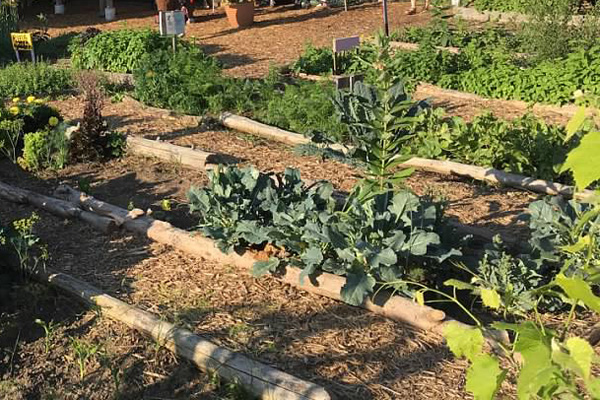City Blooming Fundamentals Explained
City Blooming Fundamentals Explained
Blog Article
All about City Blooming
Table of ContentsCity Blooming Fundamentals ExplainedWhat Does City Blooming Do?The 5-Second Trick For City BloomingThe City Blooming PDFsCity Blooming Can Be Fun For Anyone
Interested in growing food for sale in the City of Chicago? Below is a checklist of frequently asked concerns concerning the regulations and regulations that farmers must think about when intending a metropolitan farming job.
The zoning change does not customize any kind of various other codes dealing with composting, building authorizations, acquiring or renting City had building, business licenses or environmental contamination. There are existing codes that regulate these problems and they remain in full effect and may apply to your job. Community gardens are typically owned or managed by public entities, public companies or community-based organizations and preserved by volunteers.
Urban ranches expand food that is intended to be offered, either on a nonprofit or for-profit basis. As a result of their commercial purpose, city ranches need an organization permit. Yes. A community yard is allowed to offer excess create that was grown on site if the sales are accessory or secondary to the garden's main objective defined above.
Excitement About City Blooming
Composting is allowed however just for plant product that is produced and used on site. The amount of garden compost material can not surpass 25 cubic lawns at any kind of provided time according to the criteria in 7-28-715 of the City's Municipal Code. Yes. Since the soil at a lot of brand-new garden sites needs amending, garden compost, dirt, timber chips, or other materials can be gotten to create or boost the growing room - City gardening.

If a structure license is needed then the hoophouse will certainly be considered an accessory building. You can learn more concerning the structure license requirements by calling the Department of Structures. The 25,000-square-foot dimension limitation is meant to avoid a single area yard from controling a given block or diminishing the block's existing domestic or industrial character.
The limit does not use to yards located in Public Open Space (POS) districts. Can there be more than one community garden that is 25,000 square feet on a single block? Secure fencing is not needed, nevertheless, yards that have huge parking areas might be required to mount secure fencing or various other landscape design features.
How City Blooming can Save You Time, Stress, and Money.
B1 & B2 areas need that all business usage activities be carried out indoors. R districts restrict industrial activity. The laws mirror the purpose and intent of the Zoning Code. Is secure fencing required for urban ranches? Yes. Fencings might be called for, along with landscape design and screening, for specific landscaping car parking areas and outdoor job or storage space areas relying on location and the certain task taking location.
Yes. Urban farms call for building licenses and zoning approvals prior to construction. Various other forms of city evaluation might be called for depending upon specific structures, tasks, dimension, landscape design, licensing, public heath and stormwater monitoring issues. Most of these needs are identified in the task style or permitting process, nonetheless, the candidate might be responsible to independently determine particular licenses or allows that may be called for.
The Department of Organization Affairs and Customer Security can assist figure out the specific kind of company certificate that's needed. Off street vehicle parking is needed for a lot of commercial projects in Chicago. The called for number of parking rooms is based on the number of workers functioning on website and not the square video footage of the expanding room.
City Blooming for Beginners
:max_bytes(150000):strip_icc()/womanonrooftopurbangarden-7fffbb3897ac48f390d94b9545d4d082.jpg)
Yes. A metropolitan farm can offer compost material generated on website, nonetheless, the procedure should adhere to the policies in 7-28-715 of the Chicago Municipal Code. Yes. Aquaponic systems are permitted indoors on urban ranches in lots of zoning districts. A zoning evaluation and building permit is required in order to mount frameworks or systems and a company permit is required as defined above.
As much as five hives or swarms of honey bees may be maintained as an accessory usage. Nevertheless, beekeepers have to sign up with the Illinois Division of Agriculture. For more details concerning the recommended zoning modification you might get in touch with the Division of Housing and Economic Development, Bureau of Preparation and Zoning at 312.744.8563.
, which takes place in rural locations at the edge of suburbs.
Not known Details About City Blooming
It can involve a motion of organic growers, "foodies" and "locavores", that seek to form social media networks founded on a shared principles of nature and community holism. These networks can develop using official institutional support, coming to be integrated into regional town preparation as a "change community" activity for sustainable urban advancement.
Some of the very first evidence of urban farming comes from Mesopotamia.
Report this page